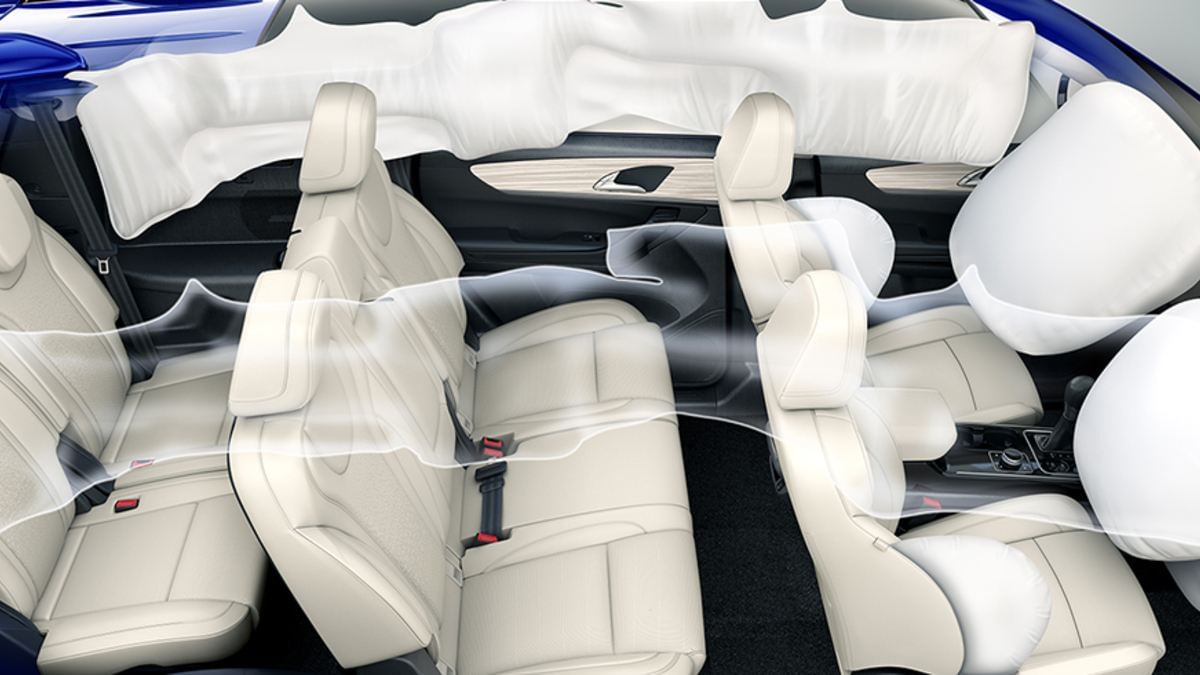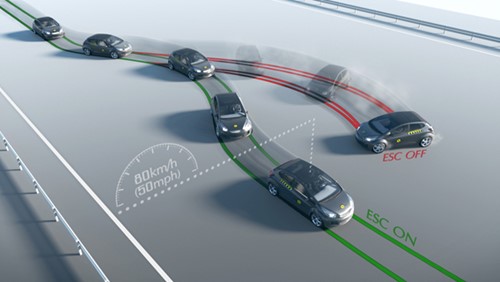where road traffic is a significant part of daily life, ensuring the safety of yourself and your loved ones while driving is paramount. Modern vehicles come equipped with an array of safety features designed to minimize the risk of accidents and protect occupants in the event of a collision. Let's delve into some of the best safety features car available for your car, providing you with peace of mind every time you hit the road.
Seatbelts: The Fundamental Safety Feature

One of the most fundamental safety features in any vehicle is the seatbelt. It serves as the primary restraint system, keeping occupants secured in their seats during a crash. Seatbelts distribute the force of a collision across the stronger parts of the body, such as the chest and pelvis, reducing the risk of severe injuries. Over the years, seatbelt technology has evolved significantly, with advancements like pretensioners and force limiters enhancing their effectiveness.
Airbags: A Lifesaver
Airbags are another crucial safety feature that has saved countless lives since their introduction. They work in conjunction with seatbelts to provide additional protection to occupants during a collision. Modern vehicles are equipped with various types of airbags, including frontal airbags, side airbags, and curtain airbags, each designed to deploy in specific crash scenarios, mitigating the risk of head and chest injuries.
Anti-lock Braking System (ABS)
The Anti-lock Braking System (ABS) is a safety feature that prevents wheels from locking up during braking, allowing the driver to maintain steering control. ABS works by modulating brake pressure to individual wheels, ensuring that they continue to rotate while braking, even on slippery surfaces. This technology significantly reduces the risk of skidding and helps drivers maintain stability during emergency braking situations.
Electronic Stability Control (ESC)

Electronic Stability Control (ESC) is a dynamic safety feature that helps prevent loss of control during sudden maneuvers or slippery road conditions. ESC utilizes sensors to monitor vehicle movement and applies individual brakes to specific wheels as needed to counteract oversteer or understeer. By enhancing stability and traction, ESC reduces the likelihood of accidents caused by skidding or spinning out of control.
Forward Collision Warning (FCW) and Automatic Emergency Braking (AEB)
Forward Collision Warning (FCW) and Automatic Emergency Braking (AEB) are advanced safety features that help prevent frontal collisions. FCW alerts drivers to imminent collision risks, while AEB automatically applies the brakes if the driver fails to respond in time. These features utilize sensors and cameras to detect vehicles or obstacles ahead, providing an additional layer of protection against potential accidents.
Read More: How to Get the Most Out of Your Lamborghini 63 Yacht
Blind Spot Monitoring (BSM)
Blind Spot Monitoring (BSM) is a technology designed to detect vehicles in the driver's blind spots and alert them to potential collision risks during lane changes. BSM uses sensors mounted on the sides of the vehicle to monitor adjacent lanes, providing visual or audible warnings if it detects a vehicle in the blind spot. This feature helps drivers make safer lane changes, reducing the likelihood of side-impact collisions.
Adaptive Cruise Control (ACC)
![]()
Adaptive Cruise Control (ACC) is a convenience feature that also enhances safety by automatically adjusting vehicle speed to maintain a safe following distance from the vehicle ahead. ACC uses sensors to monitor traffic conditions and adjusts the throttle and brakes accordingly to ensure a consistent and safe driving speed. By reducing the need for manual speed adjustments, ACC helps prevent rear-end collisions and improves overall traffic flow.
Lane Departure Warning (LDW) and Lane Keeping Assist (LKA)
Lane Departure Warning (LDW) and Lane Keeping Assist (LKA) are safety features designed to prevent unintentional lane drifting and potential collisions. LDW alerts drivers when they inadvertently depart from their lane without signaling, while LKA provides gentle steering interventions to guide the vehicle back into the lane. These features help reduce the risk of accidents caused by driver distraction or drowsiness.
Traction Control System (TCS)
The Traction Control System (TCS) is a safety feature that prevents wheel spin during acceleration on slippery surfaces. TCS monitors wheel speed and traction, automatically reducing engine power or applying brakes to individual wheels to maintain traction. By preventing wheels from spinning excessively, TCS improves vehicle stability and control, especially in adverse weather conditions.
Rearview Cameras and Parking Sensors
Rearview cameras and parking sensors are invaluable safety features that aid in parking and maneuvering in tight spaces. Rearview cameras provide a clear view of the area behind the vehicle, helping drivers avoid obstacles and pedestrians while reversing. Parking sensors use ultrasonic or radar technology to detect objects in the vehicle's path and provide audible or visual warnings to prevent collisions.
Read More: 2023 Chevrolet Corvette Z06 vs. Lamborghini Huracan Tecnica, McLaren 765LT: Club Supercar
Driver Attention Monitoring Systems
Driver Attention Monitoring Systems are advanced safety features that help prevent accidents caused by driver fatigue or distraction. These systems utilize sensors and cameras to monitor driver behavior and detect signs of drowsiness or inattention. If the system detects that the driver is becoming drowsy or distracted, it can issue alerts or prompts to encourage them to take a break or refocus their attention on the road.
Pedestrian Detection System
Pedestrian Detection Systems are safety features designed to detect pedestrians in the vehicle's path and automatically apply the brakes to prevent collisions. These systems use cameras and sensors to identify pedestrians and calculate their trajectory relative to the vehicle. If a potential collision is detected, the system can issue warnings to the driver or intervene by applying the brakes to mitigate the impact.
Vehicle-to-Vehicle (V2V) Communication

Vehicle-to-Vehicle (V2V) Communication is an emerging safety technology that enables vehicles to communicate with each other wirelessly, exchanging information about their speed, position, and direction of travel. By sharing real-time data, V2V communication allows vehicles to anticipate potential collision risks and take proactive measures to avoid accidents. This technology has the potential to revolutionize road safety by creating a networked environment where vehicles can cooperate to prevent crashes.
Conclusion
Investing in a vehicle equipped with advanced safety features is essential for ensuring the safety of yourself, your passengers, and other road users. From seatbelts and airbags to advanced driver assistance systems like FCW and AEB, these features work together to minimize the risk of accidents and protect occupants in the event of a collision. By understanding and embracing the best safety features car available for your car, you can enjoy peace of mind knowing that you're driving a vehicle designed with your safety as a top priority.
FAQs
Q. Are advanced safety features only available in expensive cars?
Ans: No, many automakers offer advanced safety features as standard or optional equipment across their vehicle lineup, including affordable models.
Q. Do safety features really make a difference in preventing accidents?
Ans: Yes, studies have shown that vehicles equipped with advanced safety features experience fewer accidents and lower rates of injury compared to those without.
Q. Can I retrofit my older car with advanced safety features?
Ans: While some aftermarket safety systems are available, retrofitting older vehicles with advanced features may not be feasible or cost-effective.
Q. Do I still need to wear a seatbelt if my car has airbags?
Ans: Yes, seatbelts and airbags work together to provide optimal protection in the event of a collision, so it's essential to wear your seatbelt at all times.
Q. Are there any downsides to relying too heavily on driver assistance systems?
Ans: While driver assistance systems can enhance safety, drivers should remain vigilant and attentive at all times, as overreliance on these systems may lead to complacency or distraction.
Read More: Top 10 Corvettes Sold at Mecum Kissimmee, Plus Bonus Vette Gallery!

